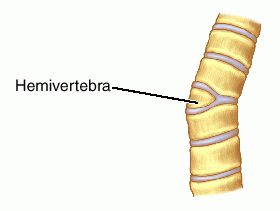Going into pregnancy for the third time, you would think I'd have the delivery stuff down pat - but life is not always that simple!
I already suspected that my spinal surgery in May could complicate things - in particular, with regard to whether or not I could have an epidural or not. In both of my previous deliveries, I had an epidural and I wasn't keen to do it without - particularly given my past need for induction which brought on labour painfully strongly and quickly!
Yesterday I had an appointment with the anesthetist to discuss my options. She has recommended that I try not to have the epidural for a few reasons - first of all, having the surgery increases my risk of complications from the epidural; and secondly, the scar tissue which would have formed around the similar level to where they would put the epidural would make the epidural "unpredictable". Basically, I could have the epidural and possibly have little pain relief from it if the scar tissue blocks the flow of medication to those nerves - or maybe worse, I could have asymmetric pain relief, eg, pain relief to only one side of the body, or perhaps pain relief to the upper abdomen but not the lower abdomen. In short, the benefits are (potentially) reduced and the risks are much higher for me now.
Now I'm not actually that scared about labouring without anesthesia - however I AM more worried about the way the hospital's policies make you labour. With induction, in my experience, they were very insistent that I stay in the bed at all times and very strict that I had continual fetal monitoring. With Maddy, the midwife freaked out when she saw my file and demanded that I lie in one position, not even allowing me to roll to my other side since the monitors kept losing Maddy's heart beat! Since the it's likely that I might need the induction again (judging from past experience!) I know I will have to fight in order to be mobile during labour - particularly if I'm going to try without the epidural. I'll also need to have better strategies for natural pain relief.
In addition, this baby is STILL breech at 34.5 weeks! I remember reading in my pregnancy with Maddy that it was common for babies with skeletal dysplasias to be breech since their legs are shorter and kicks are weaker, so it is harder for them to turn. I went back through my blog and found that Maddy had turned by around 30 weeks so I'm starting to worry about this little one! I've asked my DD support group and many of their little ones were breech too.
Up until today, I had assumed that they would do an ECV to manually turn the baby, however I had two doctors today (both my private obgyn and the public hospital prenatal diagnostician) tell me that they would not recommend it for a baby with skeletal dysplasia.
So basically, if the baby does not turn within about 2 weeks, I will be scheduled for a cesarean. Here, they schedule the cesarean between 38-39 weeks to reduce the chance of the mother going into labour and then requiring an emergency cesarean. So for me, that would probably be the last week of November.
I'm not thrilled with the thought of having a cesarean either - it does have pros and cons though. Firstly the pros: I think if she is born earlier (but not premature), her chances of being home for Christmas are greater. In addition, I AM able to have a spinal anesthesia so it kind of solves the pain relief situation. I like the idea of scheduling it in some ways, particularly with the added stresses of having a baby with special needs. The hospital will be more "prepared" for her arrival. And given the choice of elective cesarean or emergency, the elective cesarean is far more preferable for everyone involved.
The cons - the big one is the recovery. I had great recoveries the previous two times and was up and walking immediately. Particularly with Maddy, I was going in to the hospital every day (sometimes multiple times) and really forgot at times that I'd just given birth. I know the recovery from a cesarean is slower and more painful, generally speaking. Also, I think at this hospital, they don't "allow" you to walk for 24 hours after the surgery - so it will be more difficult for me to go up and see the new baby who presumably will be in the NICU. In addition, a cesarean means a 5 day hospital stay as opposed to a 3 day stay - and I don't relish the thought of being in the hospital for a minute longer than I need to be!
All in all, I feel less prepared for this delivery than I did with either of my previous two, and so much depends on whether or not the baby turns. I guess we'll have a completely different experience either way - and I'm not sure whether I like either one of them!
Please keep us in your thoughts and prayers - and I will try to update more frequently with news of this little one, who could be with us within the month!


